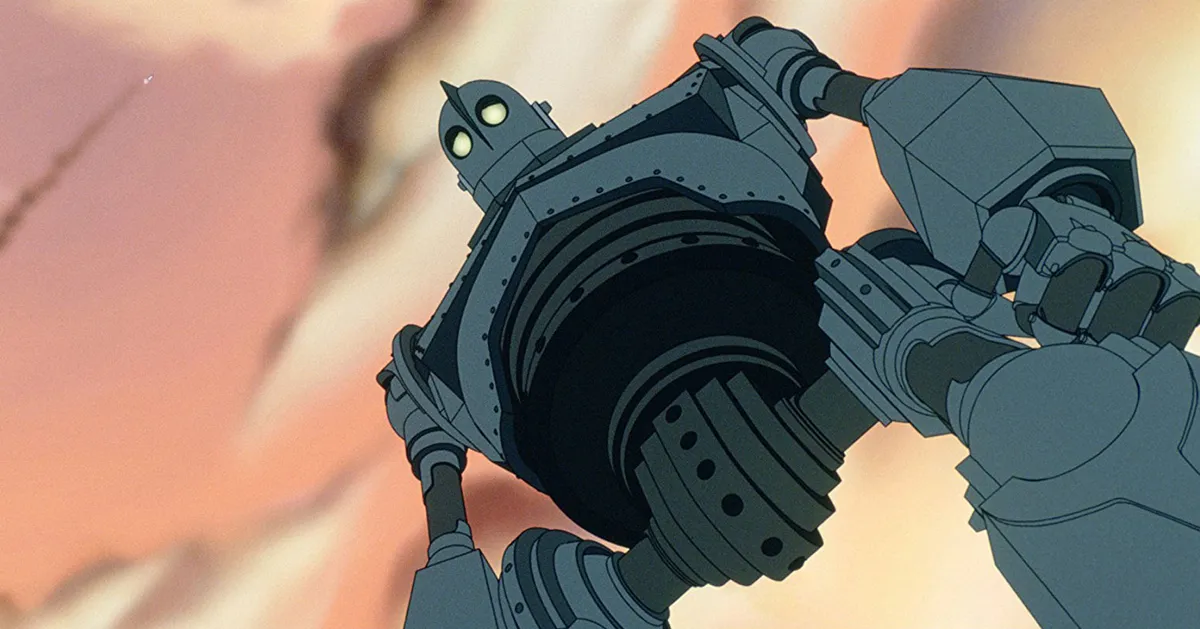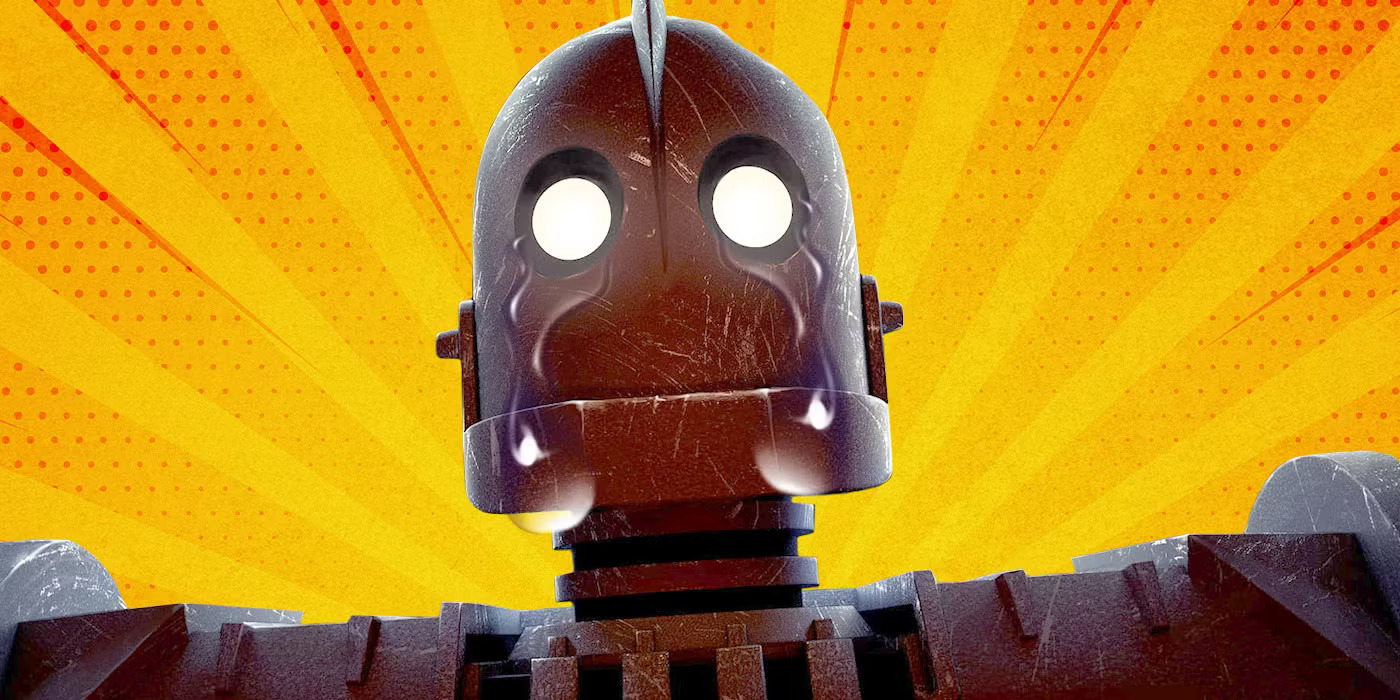Reviewing The Iron Giant years after its release presents a unique challenge. The film is widely acclaimed by those who know it, yet it remains largely unmentioned in discussions of American animation masterpieces. This paradox, the near-universal acknowledgment of its quality alongside its obscurity, highlights both its underappreciation and the enduring relevance of revisiting it. Despite its relative commercial invisibility, the film stands out as a remarkable work of animation, blending nostalgia, emotion, and storytelling in ways that remain unmatched in many children’s films of the era.
Set in 1957, the film draws heavily on the Eisenhower-era aesthetic with a warm, nostalgic depiction of small-town life. Brad Bird, the film’s director and writer, was born the same year the story is set, which adds a layer of authenticity to its period recreation. While its homage to childhood might feel impenetrable to audiences without firsthand experience of the era, the film transcends mere nostalgia. Bird uses the historical context to deepen the story’s emotional resonance, contrasting the simplicity of suburban life with the tension of Cold War paranoia. This subtle historical layering elevates it beyond a simple boy-and-his-monster story.
The plot is loosely adapted from Ted Hughes’s 1968 book The Iron Man as filtered through Pete Townshend’s 1989 concept album. The story centers on a small Maine town and its inhabitants, primarily preteen Hogarth Hughes, whose curiosity and imagination drive the narrative. Bird’s adaptation selectively incorporates elements of Hughes’s work, retaining only the central premise of a massive robot arriving on Earth. The narrative juxtaposes childhood wonder against the larger anxieties of the era, such as Cold War tensions and the Space Race, requiring audiences to navigate both a child’s perspective and an adult’s understanding.

Hogarth and The Iron Giant Form Heartfelt Friendship Through Exceptional Characterization And Performance
Hogarth Hughes, voiced by Eli Marienthal, is a socially isolated boy fascinated by science fiction. His discovery of the Iron Giant, a massive sentient metal robot who suffers from amnesia due to a head injury, sparks the central friendship of the film. The giant, voiced sparingly but powerfully by Vin Diesel, becomes Hogarth’s companion, embodying both wonder and vulnerability. Their bond drives the emotional core of the film, while external pressures, such as NSA agent Kent Mansley, voiced by Christopher McDonald, create tension as the duo strives to keep the giant a secret.
The strength of The Iron Giant lies in its characters. Hogarth and the giant are compelling and memorable, supported by exceptional voice performances. Marienthal’s portrayal captures a preteen’s emotional complexity while Diesel conveys the giant’s innocence and vulnerability with minimal dialogue. This combination creates a profound emotional impact rarely seen in animated films. Even minor characters contribute to the film’s depth, although their stylized, exaggerated designs occasionally verge on the grotesque, reflecting Bird’s willingness to depart from conventional Disney-inspired aesthetics.
The film’s visual design is a remarkable fusion of traditional and digital animation. The Iron Giant itself was created entirely in CGI, seamlessly integrated into the 2-D animation to maintain visual consistency. Its design balances sleekness with mechanical clumsiness, drawing on 1950s sci-fi aesthetics without feeling constrained by them. Hogarth and other human characters are deliberately exaggerated, lending the film a distinct personality. While some movements occasionally appear awkward due to inexperience or time constraints, the visual achievement is notable for its originality and ambition.

The Iron Giant Perfectly Recreates 1950s Americana While Showcasing Technical Animation Brilliance
Beyond its characters, The Iron Giant excels at evoking mid-century Americana. The film’s small-town Maine setting is richly detailed, with props, interiors, and architecture reflecting a historically informed perspective. The animation captures the era’s color palettes and compositional styles, subtly referencing Norman Rockwell and Douglas Sirk. Techniques such as selective focus and layered foregrounds enhance spatial realism, giving the world a tangible sense of place. These details contribute to the story’s believability, allowing viewers to immerse themselves fully in Hogarth’s environment.
Bird and his team frequently showcased technical flair, from elaborate snow sequences to ambitious camera movements in 2-D animation. While occasionally self-indulgent, these flourishes demonstrate the filmmakers’ skill and commitment to pushing the medium’s boundaries. The film’s combination of technical daring and meticulous character work positions it as one of the most accomplished animated projects of the 1990s, despite Warner Bros.’ inability to sustain such ventures. Its visual ingenuity remains influential, proving that non-Disney studios could achieve comparable artistic heights.
Commercially, The Iron Giant was a failure, largely due to poor marketing and timing. Yet it launched Brad Bird’s career, leading to landmark films at Pixar such as The Incredibles and Ratatouille. For Warner Bros., it represented a final triumph before the decline of its animation division. Its blend of heartfelt storytelling, period authenticity, and technical innovation ensures that, despite market indifference, it remains a touchstone in animation history. The film’s obscurity only enhances its cult status, positioning it as a hidden gem for both children and adults.
Ultimately, The Iron Giant endures because it transcends its source material and marketing context. Its emotional depth, technical artistry, and historical nuance create a timeless story of friendship, courage, and empathy. The film’s ability to balance the wonder of childhood with the sobering realities of adult perception remains unmatched in contemporary animation. Even decades later, it stands as one of the finest achievements in family-friendly cinema, a testament to the potential of animated storytelling to combine heart, humor, and imagination in equal measure.



